Bài giảng Tiếng Anh Lớp 10 - Unit 9: Undersea world - Part D: Writing
I. Vocabulary
1.Task 1: Read the description of the sperm whale and then complete the table that follows.
2. Task 2: The table on the next page gives some information about the dolphin. Write a paragraph that describes the facts and fingures provided in the table.

Trang 1
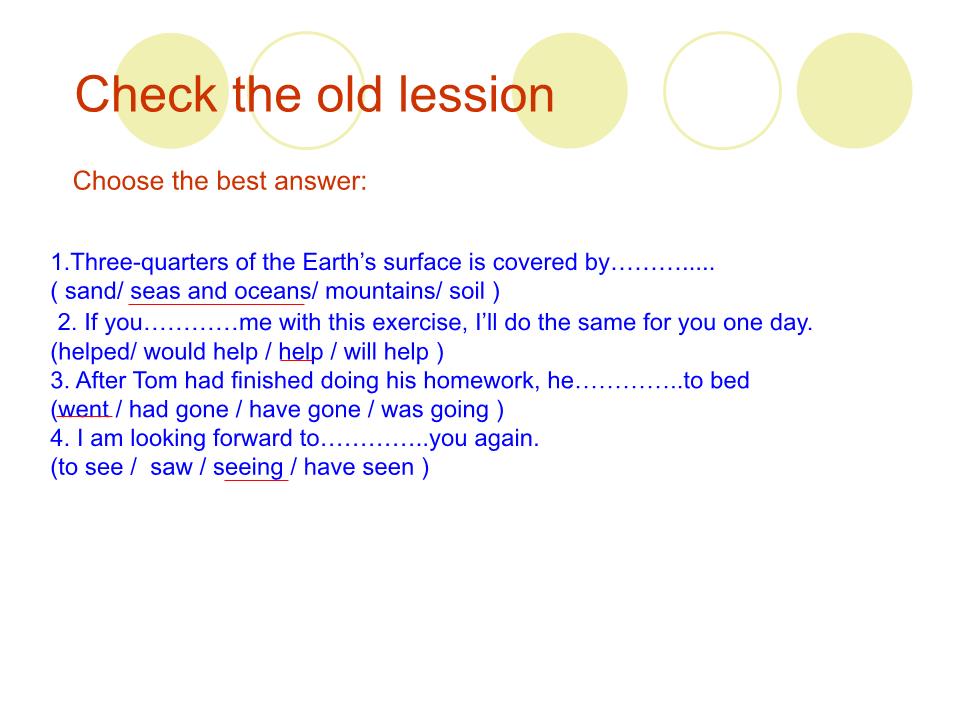
Trang 2
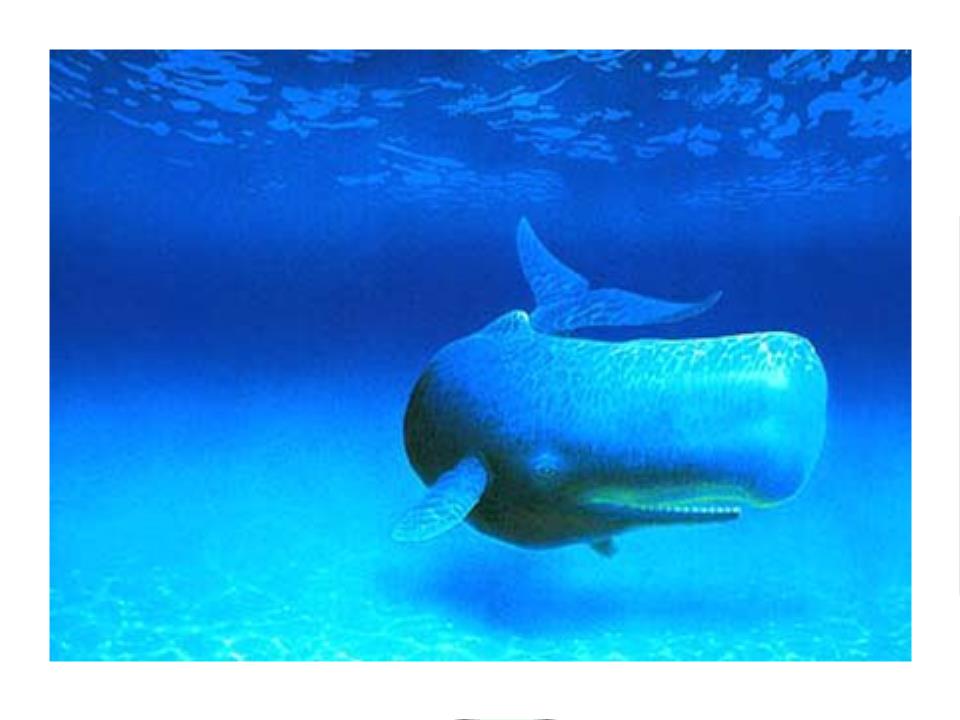
Trang 3
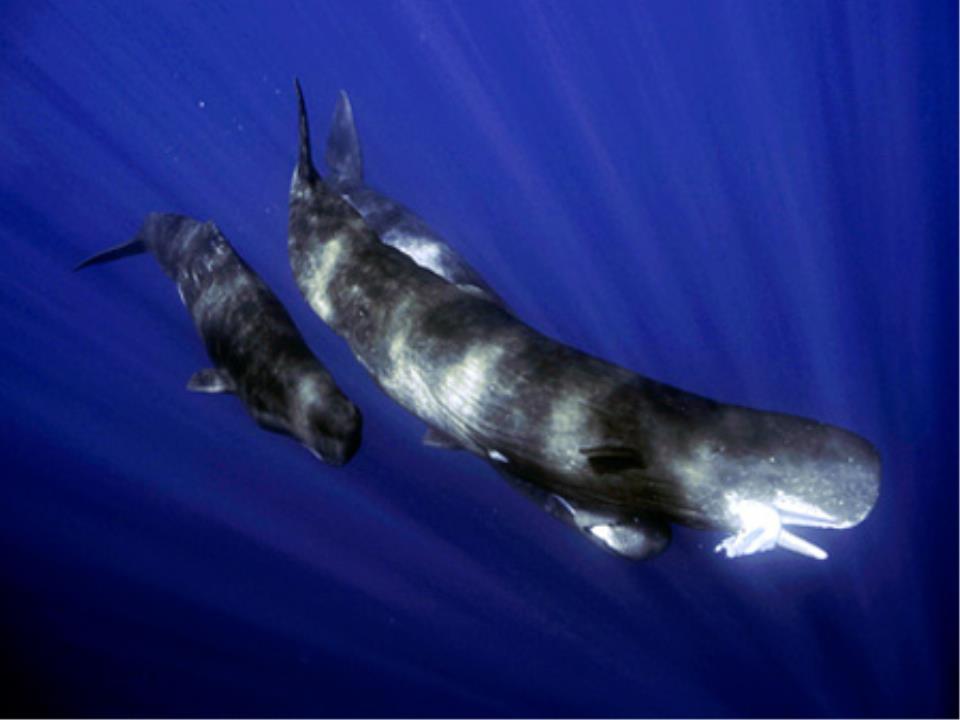
Trang 4
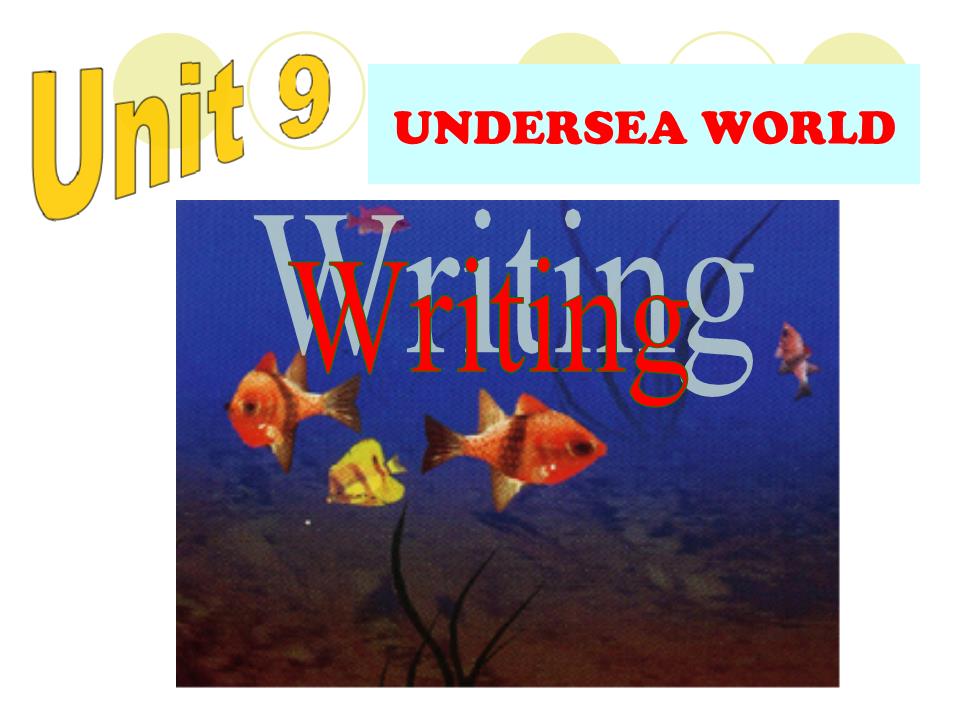
Trang 5
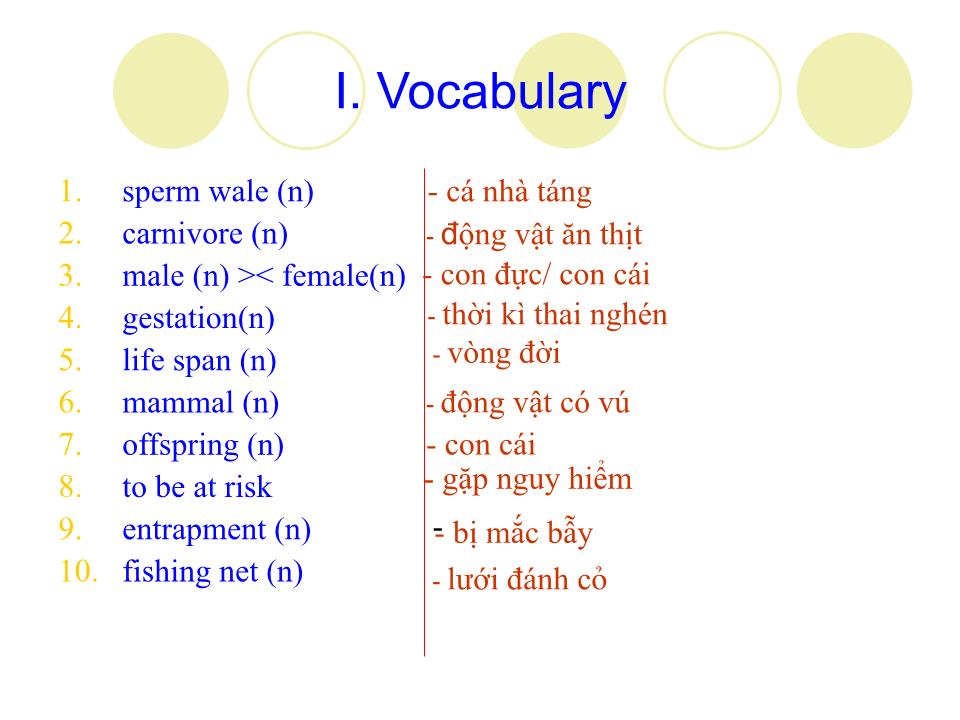
Trang 6
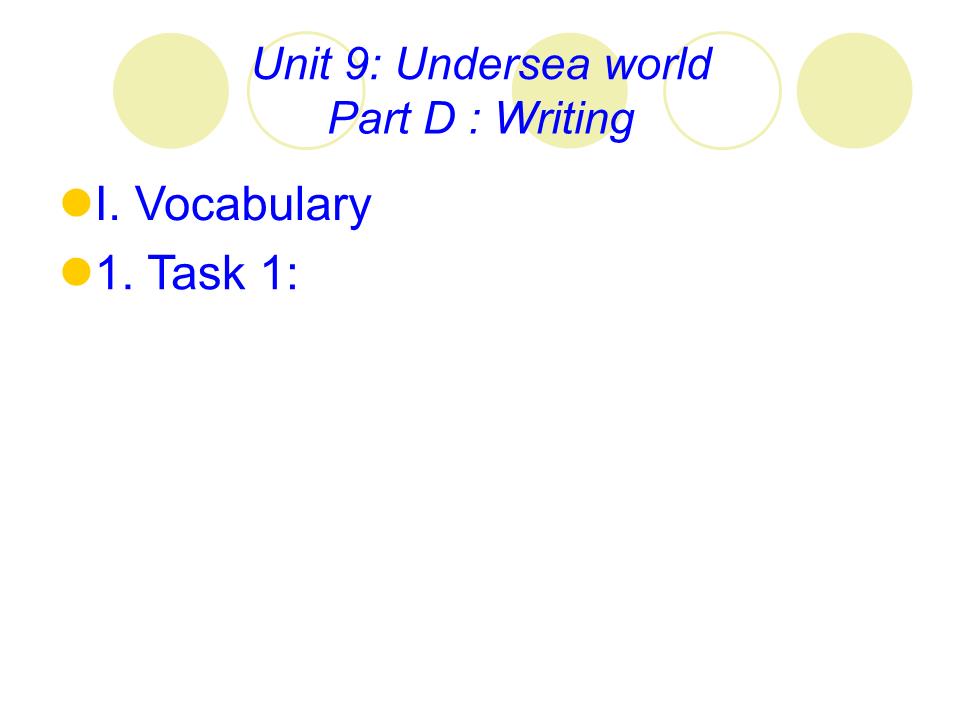
Trang 7
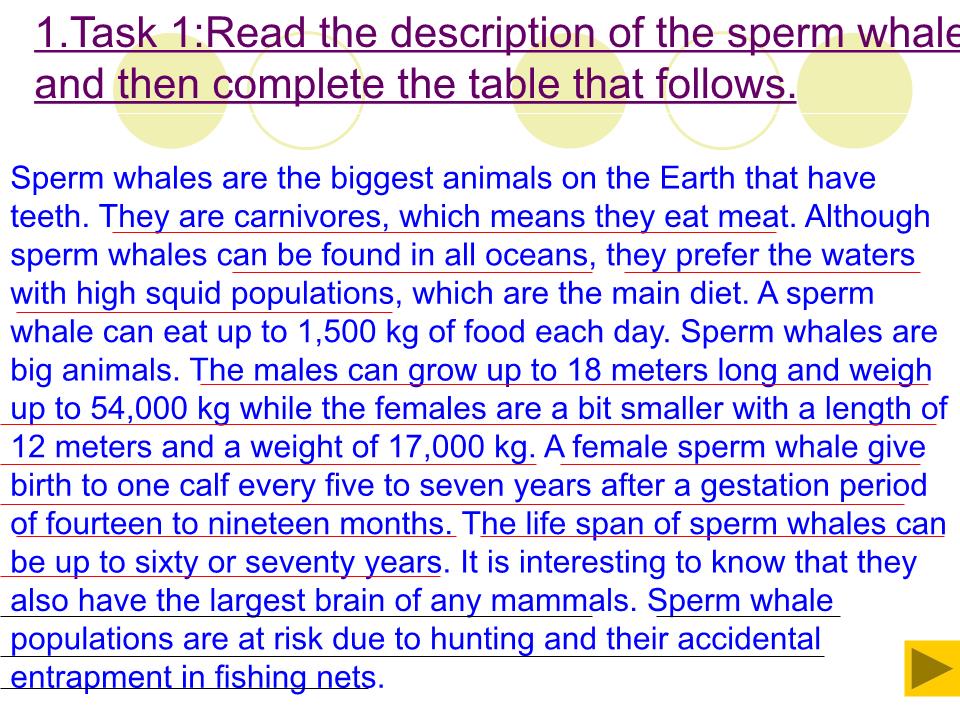
Trang 8
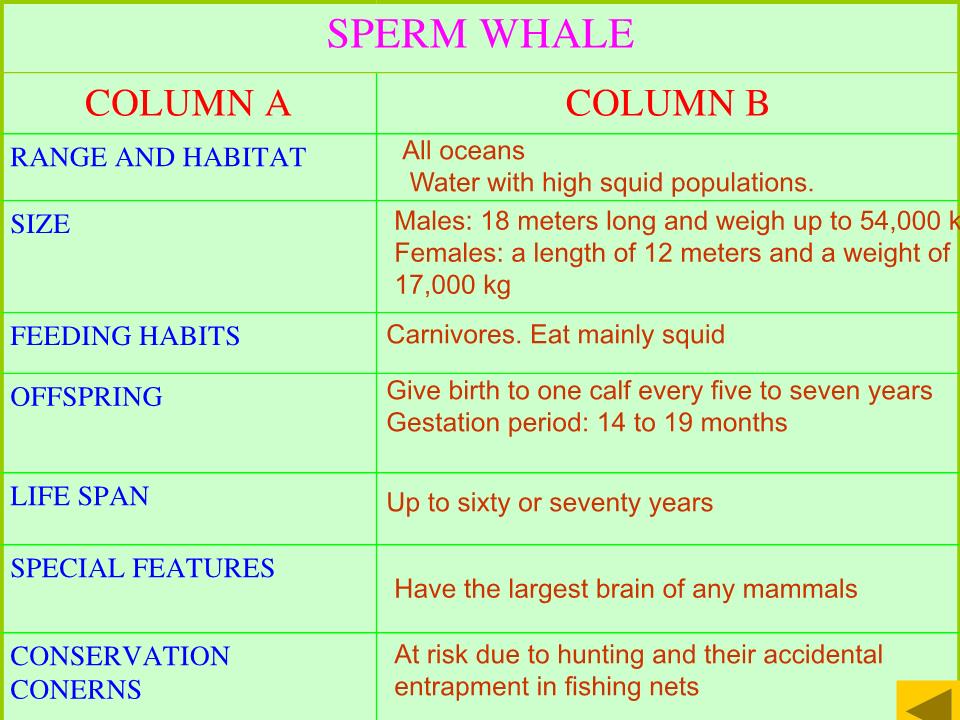
Trang 9
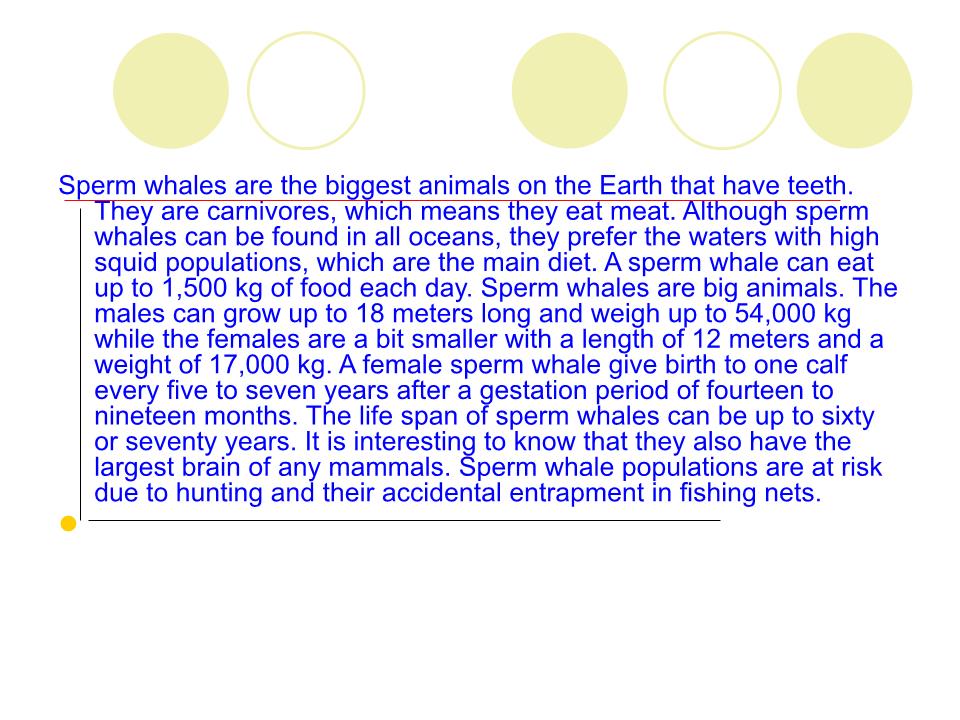
Trang 10
Tải về để xem bản đầy đủ
Bạn đang xem 10 trang mẫu của tài liệu "Bài giảng Tiếng Anh Lớp 10 - Unit 9: Undersea world - Part D: Writing", để tải tài liệu gốc về máy hãy click vào nút Download ở trên
Tóm tắt nội dung tài liệu: Bài giảng Tiếng Anh Lớp 10 - Unit 9: Undersea world - Part D: Writing

Check the old lession 1.Three-quarters of the Earth’s surface is covered by..... ( sand/ seas and oceans/ mountains/ soil ) 2. If youme with this exercise, I’ll do the same for you one day. (helped/ would help / help / will help ) 3. After Tom had finished doing his homework, he..to bed (went / had gone / have gone / was going ) 4. I am looking forward to..you again. (to see / saw / seeing / have seen ) Choose the best answer: Hello, I’m a sperm whale. Hello, I’m a dolphin. Would you like to know more about us? Unit 9 UNDERSEA WORLD Writing I. Vocabulary sperm wale (n) carnivore (n) male (n) >< female(n) gestation(n) life span (n) mammal (n) offspring (n) to be at risk entrapment (n) fishing net (n) - cá nhà táng - đ ộng vật ăn thịt - con đực/ con cái - thời kì thai nghén - vòng đời - động vật có vú - con cái - gặp nguy hiểm - - bị mắc bẫy - l ư ới đánh c á Unit 9: Undersea world Part D : Writing I. Vocabulary 1. Task 1: 1.Task 1:Read the description of the sperm whale and then complete the table that follows. Sperm whales are the biggest animals on the Earth that have teeth. They are carnivores, which means they eat meat. Although sperm whales can be found in all oceans, they prefer the waters with high squid populations, which are the main diet. A sperm whale can eat up to 1,500 kg of food each day. Sperm whales are big animals. The males can grow up to 18 meters long and weigh up to 54,000 kg while the females are a bit smaller with a length of 12 meters and a weight of 17,000 kg. A female sperm whale give birth to one calf every five to seven years after a gestation period of fourteen to nineteen months. The life span of sperm whales can be up to sixty or seventy years. It is interesting to know that they also have the largest brain of any mammals. Sperm whale populations are at risk due to hunting and their accidental entrapment in fishing nets. SPERM WHALE COLUMN A COLUMN B RANGE AND HABITAT SIZE FEEDING HABITS OFFSPRING LIFE SPAN SPECIAL FEATURES CONSERVATION CONERNS All oceans Water with high squid populations. Males: 18 meters long and weigh up to 54,000 kg Females: a length of 12 meters and a weight of 17,000 kg Carnivores. Eat mainly squid Give birth to one calf every five to seven years Gestation period: 14 to 19 months Up to sixty or seventy years Have the largest brain of any mammals At risk due to hunting and their accidental entrapment in fishing nets Sperm whales are the biggest animals on the Earth that have teeth. They are carnivores, which means they eat meat. Although sperm whales can be found in all oceans, they prefer the waters with high squid populations, which are the main diet. A sperm whale can eat up to 1,500 kg of food each day. Sperm whales are big animals. The males can grow up to 18 meters long and weigh up to 54,000 kg while the females are a bit smaller with a length of 12 meters and a weight of 17,000 kg. A female sperm whale give birth to one calf every five to seven years after a gestation period of fourteen to nineteen months. The life span of sperm whales can be up to sixty or seventy years. It is interesting to know that they also have the largest brain of any mammals. Sperm whale populations are at risk due to hunting and their accidental entrapment in fishing nets. Describing information from a table Stucture: 1. Topic sentence : The name of animal Its most remarkable feature 2. Other sentences: describe in details - Where ? -length and weight? -what do they eat ? -offspring? -How long do they live ? -special feature ? -conservation concern? Unit 9: Undersea world Part D : Writing I. Vocabulary 1. Task 1: 2. Task 2: The table on the next page gives some information about the dolphin. Write a paragraph that describes the facts and fingures provided in the table. DOLPHIN RANGE AND HABITAT Oceans worldwide Prefer coastal waters and bays SIZE Smallest: about 50 kg and 1.2 m Largest: up to 8,200 kg and 10m FEEDING HABITS Carnivores. Eat mostly fish OFFSPRING Give birth to one calf every 2 years Gestation period: 11-12 months LIFE SPAN From 25 to 65 years Sometimes longer, depending on the species SPECIAL FEATURES Mammals, not fish Among the most intelligent animals CONSERVATION CONERNS At risk due to habitat pollution and accident fishing net entrapment Dolphins are not fish.They are mammals that live in the water. Dolphins are among the most intelligent animals on Earth . Although they can be found in all oceans in the world, dolphins prefer coastal waters and bays. The size of dolphins varies greatly. The smallest dolphin is just about 50 kilograms in weight and 1,2 metres in length while the largest one can weigh up to 8,200 kilograms and is 10 metres long. Dolphins are canivores and they eat mainly fish. A female dolphin givs to one calf every
File đính kèm:
 bai_giang_tieng_anh_lop_10_unit_9_undersea_world_part_d_writ.ppt
bai_giang_tieng_anh_lop_10_unit_9_undersea_world_part_d_writ.ppt

